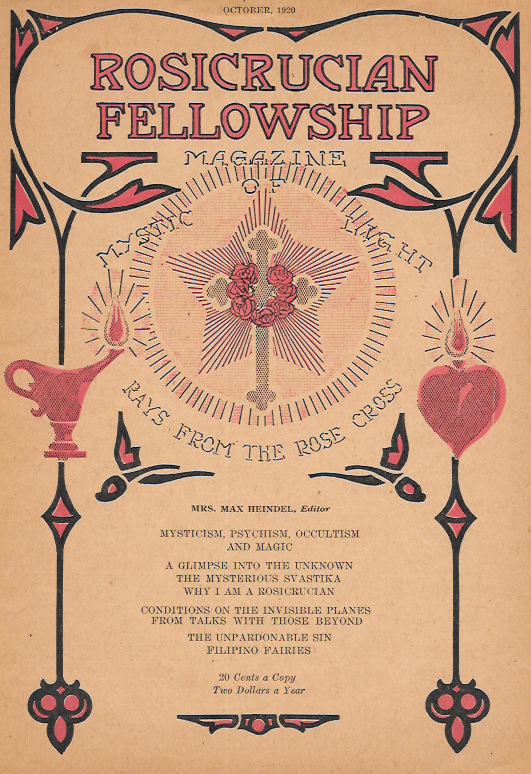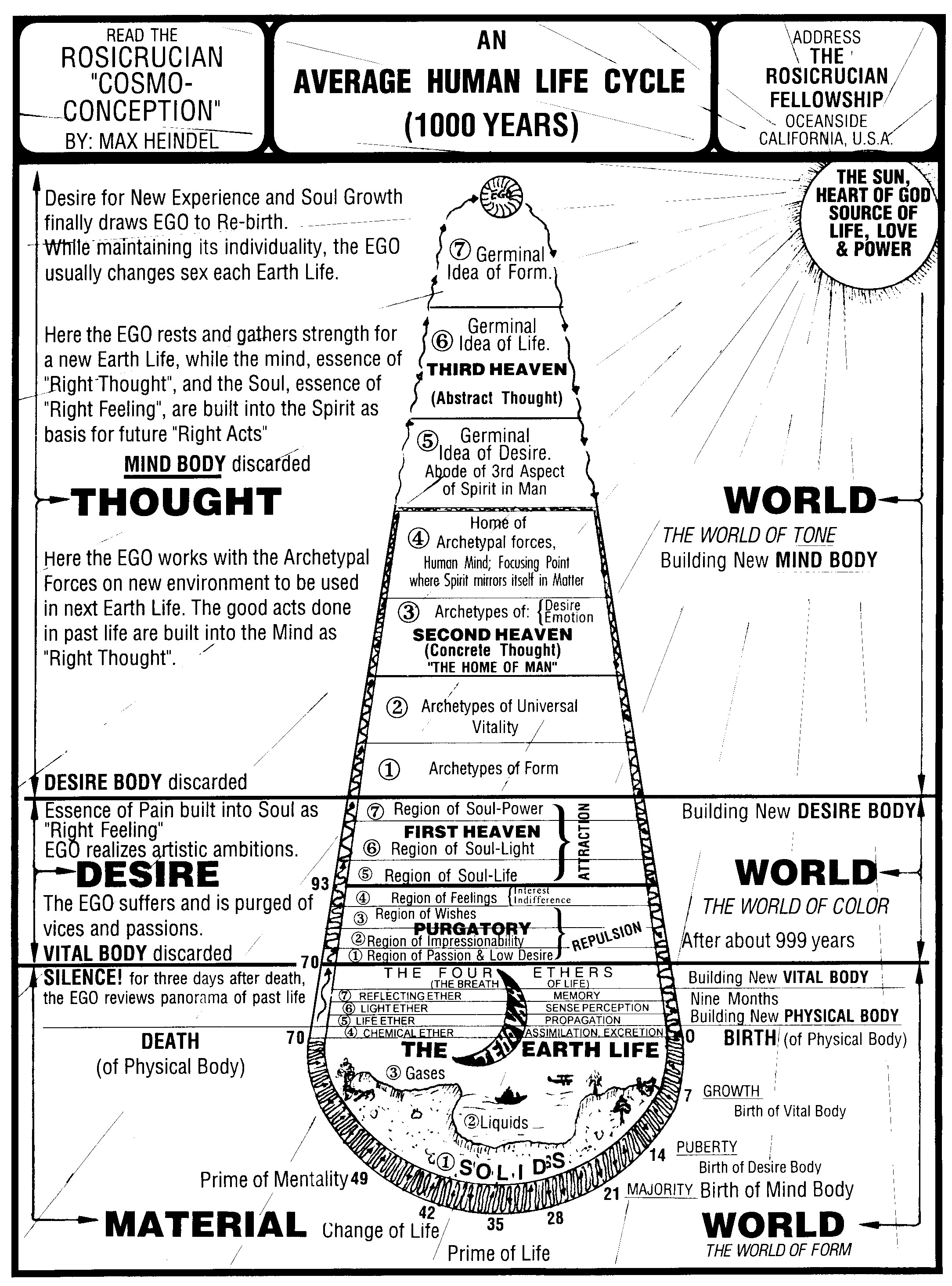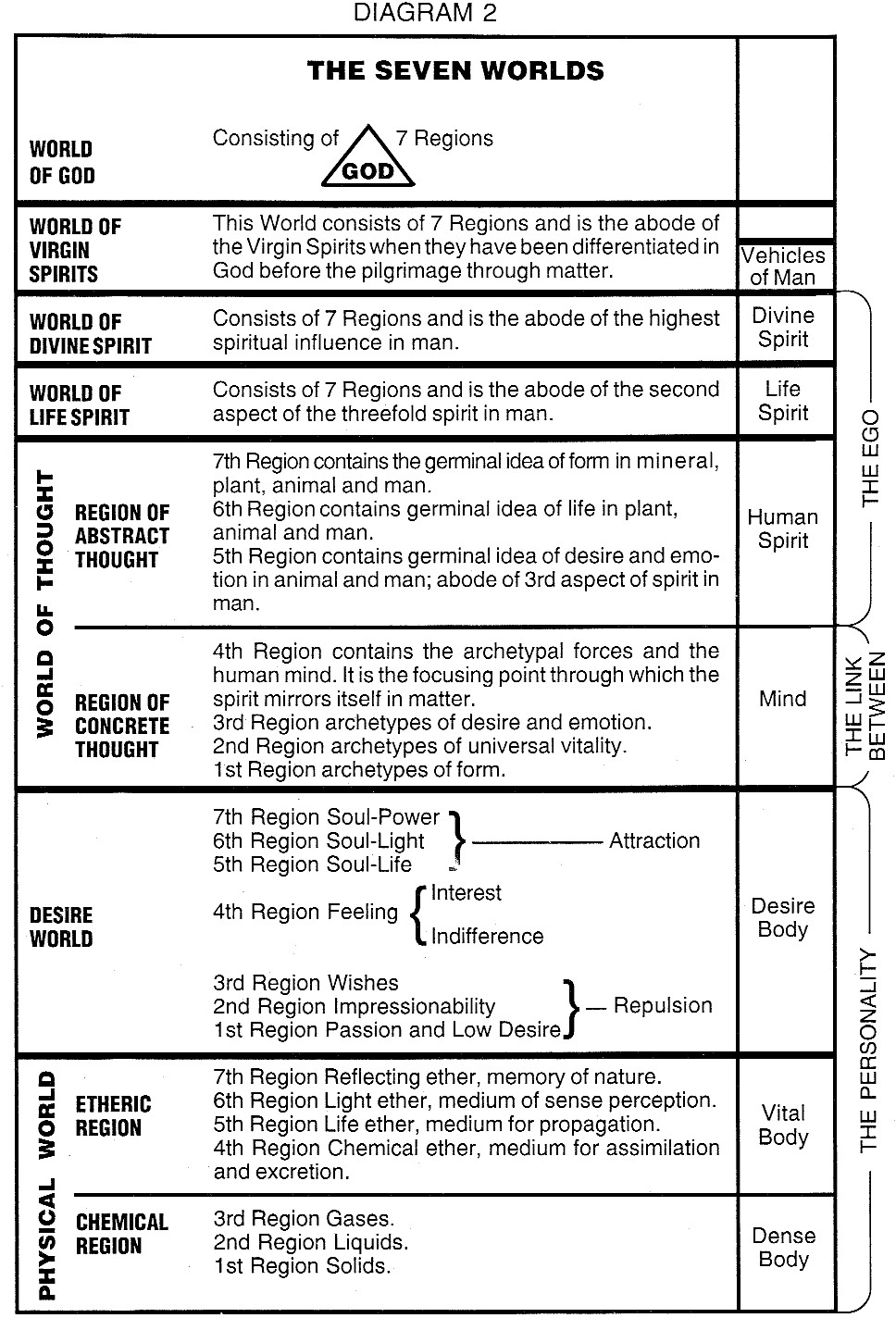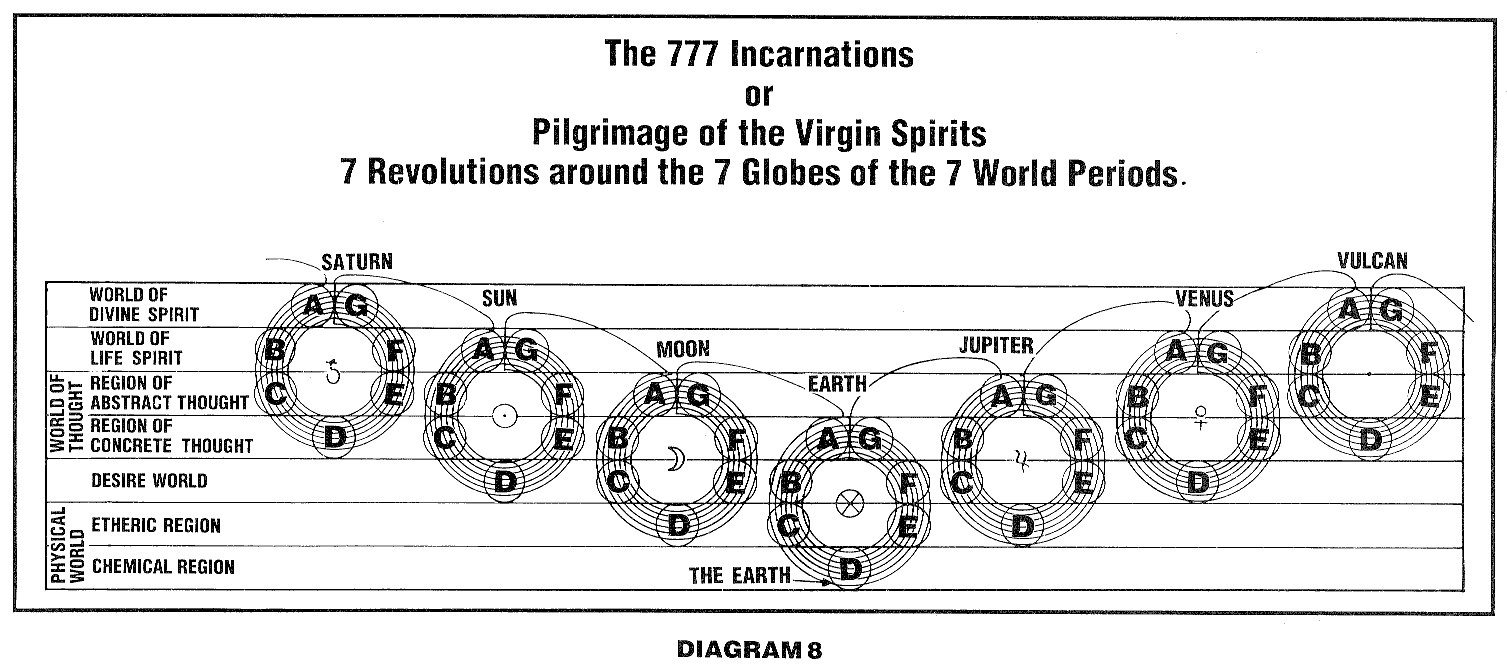
| rosicrucianU.com | ||
| Simplified Scientific Christianity |

Astrology is a phase of the Mystic Religion, as sublime as the stars with which it deals and not to be confused with fortune telling. As the tides are measured by the motion of sun and moon, so also are the eventualities of life measured by the circling stars, which may therefore be called the "Clock of Destiny." A knowledge of their import is an immense power, for to the competent astrologer a horoscope reveals every secret of life.
Thus sings Cale Young Rice in "The Mystic," But there are no comets "coursing Mars." In this solar system of ours the sun holds undisputed reign; comets course the sun. As we venture forth into the fathomless abyss of space, we are bound to meet sooner or later one of these strange celestial phenomena known as comets.
The occult investigator regards them as cosmic miscarriages, the origin and ultimate destiny of which are veiled in deepest mystery.
The astrologer, though he senses their more or less disturbing influence, has so far not been able to definitely state and tabulate their place and power.
The astronomer with indefatigable diligence subjects them to the scrutiny of his 200-inch eye, calculates volume, speed, orbit, only to be baffled again and again by the seeming disobedience to all known laws on the part of these celestial vagabonds.
Nevertheless it is to the comets and their elliptic orbits that we owe the impetus to and opportunity of demonstration which led Kepler to discover some of the great mathematical laws providing us with the very basis of all our astronomical data, It is to the comets also that we owe a periodic revival of public interest in astronomical subjects, though as often as not such interest is inspired by fear and superstition.
Of all the fascinating phenomena which we observe in the starry heavens comets show the greatest variety and greatest apparent inconstancy. Those which have been visible to the naked eye consisted of a star-like nucleus enveloped in a large, more or less spherical, so-called coma of a substance so rare and transparent that the stars which it passed were in no wise obscured, and followed by a reflectingly luminous tail, sometimes millions of miles in length. The telescope, however, reveals that the majority of comets have no tail but only a "head," i.e., nucleus and coma. The size of these heads varies from about 18,000 miles in diameter to that of the great comet of 1811 which was calculated to be larger in volume than the sun. Both Encke's and Halley's comets have diameters which exceed that of the moon's orbit around the earth. Tails have been observed which were more than 100 million miles in length. In spite of these gigantic dimensions their almost etheric rarity of substance excludes any noticeable gravitational influenee. This was most satisfactorily proven when the earth passed bodily through the tail of the great comet of 1861 on June 30th of that year without changing our planet's time of revolution by a single second. On the other hand it has been observed that the course of comets is often decidedly changed by the gravitational influence of the larger planets.
The original orbits of comets have been, and with the great majority still are, narrow elongated ellipses with the sun at one of the foci. Consequently while at perihelion they are mostly intra- Mercurial, and one actually has been observed to pass within 500,000 miles of the sun, "brushing the corona," only to reappear on the opposite side and withdraw toward outermost darkness, reaching aphelion somewhere in the dim distance of millions of miles beyond the orbit of Neptune. In the course of ages, however, it so happened that one or another of the comets passed near one of the great planets and was captured, as it were, by the gravitational influence of this planet. Its orbit was changed and shortened and brought into systematic relation with the orbit of the planet. This was not an event of a day or two but a gradual, pendulum-like process lasting for ages and still going on. Not fewer than thirty comets have been captured by Jupiter, and are now known to astronomers as "Jupiter's family."
Now, to use the fanciful picture of the poet, with our "feet in the stirrup seat of a comet" we will extend our mental excursion into the wondrous world of the most gigantic and most powerful of all the planets in our solar system.
A world within worlds, a system within a system, in size and structure the nearest approach to the sun, the grandeur of Jupiter and its nine satellites is overwhelming. Though in volume only one thousandth that of the sun, it is nevertheless one thousand three hundred times as large as our earth. It is still in a superhot and semi-fluid state, certain parts of its surface showing a dull glow of self-luminosity, not sufficient to prevent the eclipsing of its satellites, but sufficient to color temporarily the dense clouds of vapor surrounding it. The extraordinarily rapid shifting of these clouds tells us of cyclonic storms a thousand times more furious than the fiercest typhoons known on earth, and of electric outbursts sufficient to destroy all physical life in the twinkling of an eye. Life on Jupiter, however, is not of a physical but of a spiritual nature. Its mighty exalted beings compare with us mere earthlings as the grand and glorious body of Jupiter compares with the dense, dark, and dwarfish body of the earth.
Everything in, on, or about Jupiter is built on a scale far beyond human comprehension and imagination. We stand amazed before the bare facts. A distance of 483 million miles from the sun, it travels along its orbit at a speed of eight miles per second (a speed at which one could go around the earth in less than one hour) accompanied by nine small globes, which in turn revolve around their parent body. Its orbit, however, is designed so as to meet these proportions, and in spite of its extraordinary speed, it takes 12 earth years to make one revolution around the sun. At the same time this giant brother planet rotates on its axis in a little less than ten hours, and inasmuch as its equatorial circumference measures 278,800 miles, every point of its equator travels 28,000 miles per hour. The result of this fast rotation is a very obvious and considerable outward bend at the equator and a flattening in the region of the poles, its equatorial diameter being more than 5000 miles greater than the polar diameter.
Jupiter's satellite system consists of five small and four large moons. Of the latter, one is slightly smaller and one slightly larger than our own moon, while the two largest exceed even Mercury in volume. The nearest is only about 70,000 miles, the farthest approximately 16 million miles from the planet's surface. A noteworthy feature, perplexing to the scientist and interesting to the occult investigator, consists in the factthat while the first seven move about Jupiter in the same direction as the planets move about the sun, the outermost two move in the opposite direction and in orbits greatly inclined to. the plane of the planet's equator. The explanation of this strange exception to the rule is simple, though not provable to materialistic science: The two outermost bodies are not true moons at all, but asteroids which were captured by Jupiter's gravitational influence, and by a sideward movement were forced into their present orbit.
It is not generally known that the satellites of Jupiter were the cause of a great scientific discovery for us inhabitants of the earth. They furnished us with the first evidence that light requires an appreciable time to pass from one point to another. The Danish astronomer Roemer, who lived in the 17th century, made a special study of the eclipses which occur when these satellites enter the shadow of Jupiter. He carefully calculated and tabulated the times when eclipses were to occur, only to find that they actually took place from 1 to 16 minutes later. The difference was greater the nearer Jupiter happened to be to a conjunction with the sun. It then occurred to him that at the time of Jupiter's conjunction with the sun, the earth was 186 million miles (diameter of earth's orbit) farther away from Jupiter than at opposition time and that the light rays were traveling the additional distance in 16 minutes. At the time this was regarded as a doubtful hypothesis, and only many years after Roemer's death was he given credit for actually. discovering what is now known as the velocity of light.
Before we take our next dip into space we will give free rein to our imagination and alight on the nearest of Jupiter's, large satellites. We find a world of its own, not so very much different from the earth. It has air, water, clouds, and a temperature similar to that of our polar regions. It is inhabited by intelligent beings, stragglers who could not follow the rapid pace of evolution on Jupiter. As they were given conditions similar to those on earth, we may presume that their evolutionary status is in some respects similar to our own. But one feature we find on this little faraway world which is radically, different from anything ever perceived by human eyes. We look in vain for the familiar sight of the starry heavens. The sky is brilliantly lit up by the soft mellow light of a heavenly body fourteen hundred times the size of our terrestrial full moon. It is Jupiter, seen in close proximity and appearing to the inhabitants of this satellite as a moon. This large luminous-disk presents a fascinating spectacle of grotesque figures, ever changing in color and form, with dark lines with.a reddish glow on each side of and parallel to the equator, clearly betraying the red-hot interior, and still transmitting a small degree of warmth and light. Periodically the red regions increase and decrease as if the giant were breathing.
There are eight other moons of various sizes and various hues, rising and setting, often eclipsing one another, two of them moving in a direction opposite to that of the, others. And there is the sun, reduced to a rather small disk, only one twenty-fifth of its size as seen from the earth. . There are also meteors, i.e. "shooting stars," in great numbers, for Jupiter exerts a powerful attraction, and ever and again there appears a frisky white, changeable comet. And somewhere amid this dazzling display of light and color is a tiny speck, visible the naked eye only as a very faint little point, the earth. Such is the skyscape seen from a satellite of giant Jupiter.
— Rays from the Rose Cross Magazine, February, 1931, p. 90-96

|

|

|
|
|
Contemporary Mystic Christianity |
|
|
This web page has been edited and/or excerpted from reference material, has been modified from its original version, and is in conformance with the web host's Members Terms & Conditions. This website is offered to the public by students of The Rosicrucian Teachings, and has no official affiliation with any organization. | Mobile Version | |
|